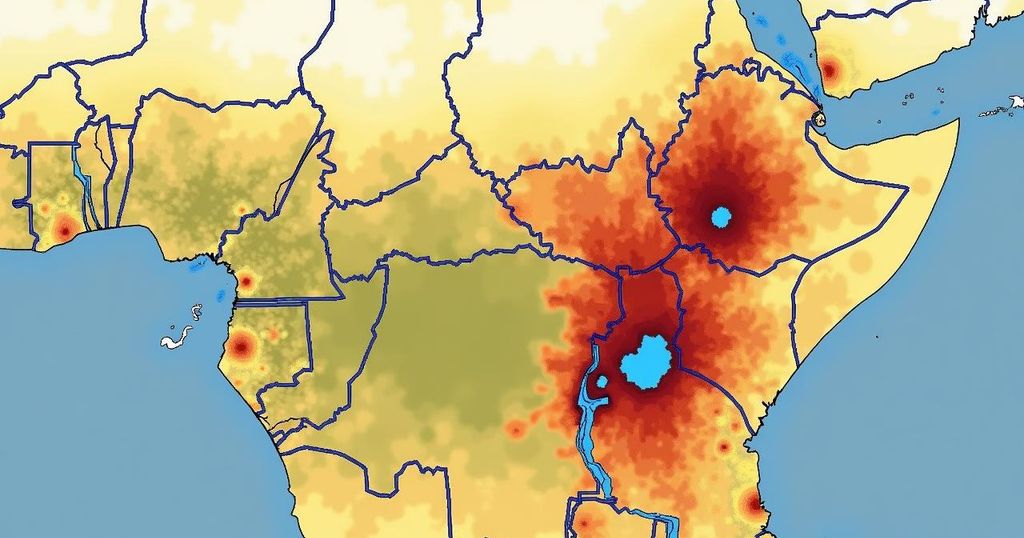Severe Drought Crisis in Southern Africa: Impacts and Urgent Needs

The 2023/2024 El Niño event has led to a severe drought in Southern Africa, affecting millions with food insecurity, water shortages, and disease outbreaks. With approximately 23 million people at risk and national emergencies declared in multiple countries, urgent humanitarian assistance is essential to address the crisis. The situation is compounded by existing health challenges and has resulted in widespread internal displacement.
The ongoing 2023/2024 El Niño phenomenon has precipitated one of the most severe droughts in Southern Africa, significantly impacting nations such as Malawi, Zambia, Zimbabwe, and Mozambique. The effects of this environmental crisis have been exacerbated by other factors, including pre-existing food insecurity and challenging microeconomic circumstances. Reports indicate that the drought has resulted in diminished maize harvests, leading to acute food shortages and limited access to safe drinking water. Close to 23 million individuals are currently experiencing critical levels of food insecurity, with national drought emergencies declared in several nations, including Botswana, Lesotho, and Namibia. Estimates from the Famine Early Warning Systems Network (FEWS NET) project that approximately 14 million people will require immediate humanitarian assistance during the upcoming lean season from October to December 2024. Angola and Mozambique are also facing dire situations, with an estimated 1.8 million people food insecure in Angola and 3.3 million in Mozambique. Additionally, over 2 million children across the region are anticipated to suffer from acute malnutrition, with more than half a million experiencing severe wasting. The impact of the drought extends beyond food security; the region is experiencing outbreaks of disease and significant agricultural challenges. The coinciding cholera epidemic, particularly severe in Malawi and Mozambique, has been exacerbated by water shortages, jeopardizing sanitation efforts. The emergence of new health risks, including mpox, poses further obstacles to the already strained healthcare responses. The interplay of these crises has led to an increase in mental health issues, gender-based violence, and the transmission of HIV and AIDS, necessitating a robust and coordinated response from health systems in the region. Over a million individuals have been internally displaced due to conflicts and climate-related disasters, particularly in Malawi, Mozambique, and Zimbabwe.
The Southern African region is currently grappling with the compounded adverse effects of the 2023/2024 El Niño event, which has triggered unprecedented drought conditions. Characterized by delayed rainfall and extreme heat, this event has inflicted severe damage to agriculture and food security, leading to wide-ranging humanitarian crises. Historical data indicates that the 2024 El Niño is among the most severe recorded in the past four decades, thus posing significant risks to community stability and public health. The drought has further strained areas already facing challenges related to crop failures, access to clean water, and social cohesion.
In summary, the drought driven by the El Niño phenomenon has unleashed devastation across Southern Africa, placing millions at risk of food insecurity and increased health challenges. Effective humanitarian assistance is urgently required to mitigate the crisis, particularly in the most affected nations. The intersection of climate change, pre-existing health epidemics, and social issues necessitates concerted efforts to enhance regional preparedness and resilience against future environmental shocks.
Original Source: reliefweb.int






